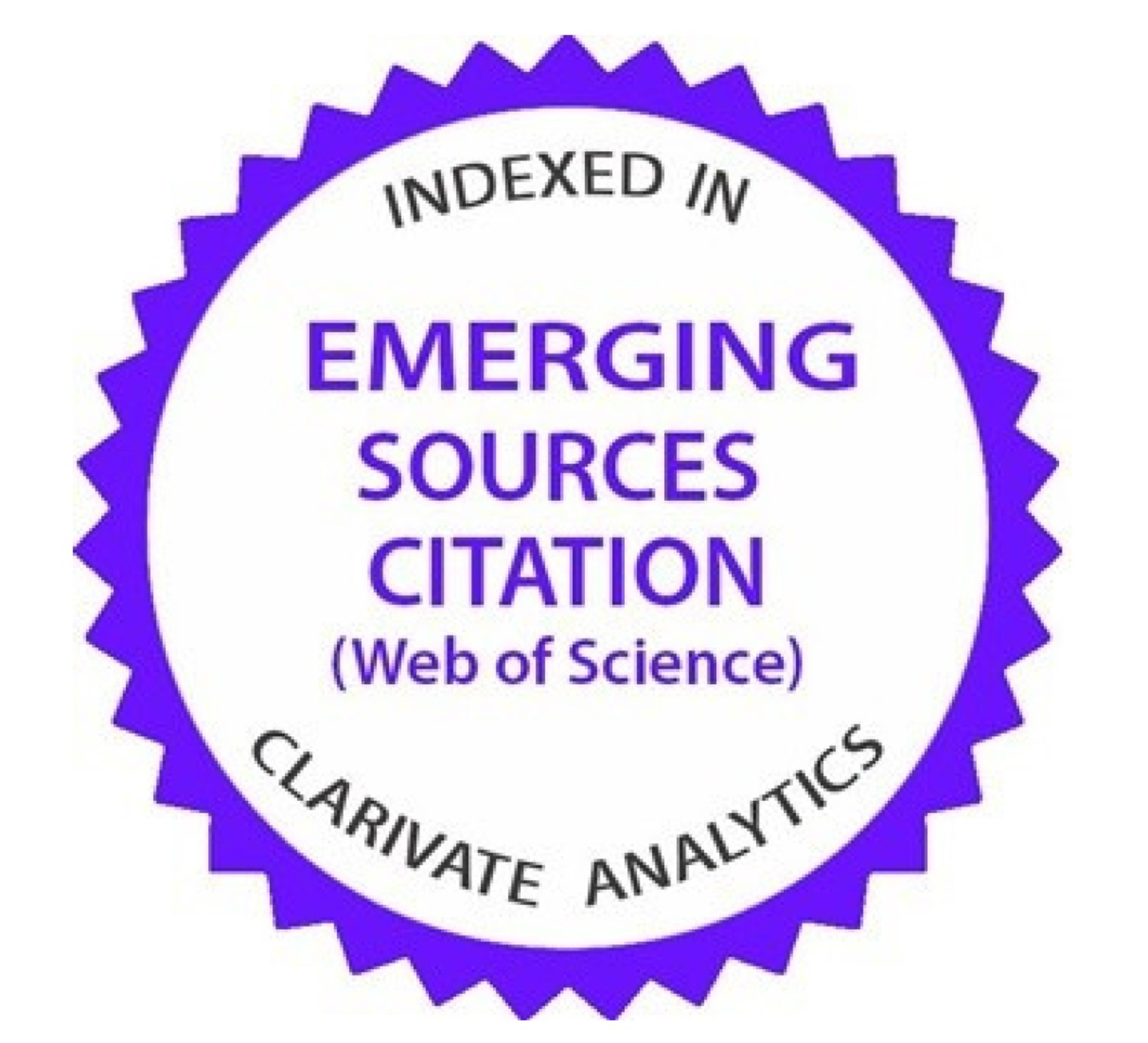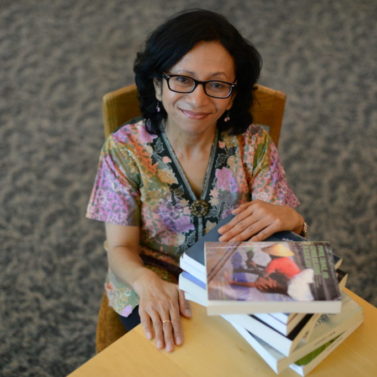The influence of dating apps on sexual behavior among female students: a sociocultural analysis
Downloads
Online dating apps have become a means for some female college students in Yogyakarta to find sexual partners. Apps such as Tinder, Bumble, and Tantan indicate people nearby and have anonymity features that make it easier for users to connect with people, allowing for a freer exploration of sexual identity, thus contributing to the formation of promiscuous sexual behavior among female college students. This study aims to analyze the role of dating apps in shaping promiscuous sexual behavior among female college students in Yogyakarta from a sociocultural perspective. Using a qualitative approach and ethnographic method, this study found that dating apps are used as a means of finding partners to fulfill sexual desires without serious commitment. Factors such as ease of access, anonymity, the flexible social environment, and the influence of popular culture play an important role in reducing the social supervision that previously restricted sexual behavior. The findings suggest that dating apps not only facilitate physical encounters but also create new spaces for female college students to adopt more permissive sexual values. The features of anonymity and ease of access create an open space for the free exploration of sexual identity and the adoption of new values related to sexuality, influenced by popular culture and a flexible social environment.
Al-Jbouri E, Volk AA, Spadafora N, & Andrews NCZ (2024) Friends, followers, peers, and posts: adolescents’ in-person and online friendship networks and social media use influences on friendship closeness via the importance of technology for social connection. Frontiers in Developmental Psychology 2. https://doi.org/10.3389/fdpys.2024.1419756.
Baumert J, Becker M, Jansen M, & Köller O (2024) Cultural identity and the academic, social, and psychological adjustment of adolescents with immigration background. Journal of Youth and Adolescence 53 (2):294-315. https://doi.org/10.1007/s10964-023-01853-z.
Beauchamp AM, Cotton HR, LeClere AT, Reynolds EK, Riordan SJ, & Sullivan KE (2017) Super likes and right swipes: How undergraduate women experience dating apps. Journal of the Student Personnel Association at Indiana University 1-16. https://scholarworks.iu.edu/journals/index.php/jiuspa/article/view/23700.
Blanc A (2024) Attitudes toward sexual behaviors: relationship with gender and sexual orientation. Current Psychology 43 (2):1605-1614. https://doi.org/10.1007/s12144-023-04398-3.
Bonilla-Zorita G, Griffiths MD, & Kuss DJ (2023) Dating app use and wellbeing: an application based pilot study employing ecological momentary assessment and objective measures of use. International Journal of Environmental Research and Public Health 20 (9):5631. https://doi.org/10.3390/ijerph20095631.
Budde J, Witz C, & Böhm M (2022) Sexual Boundary Violations via Digital Media Among Students. Frontiers in Psychology 12:755752. https://doi.org/10.3389/fpsyg.2021.755752.
Caltabiano M, Castiglioni M, & De-Rose A (2020) Changes in the sexual behaviour of young people: introduction. Genus 76 (1):38. https://doi.org/10.1186/s41118-020-00107-1.
Castro Á & Barrada JR (2020) Dating apps and their sociodemographic and psychosocial correlates: A systematic review. International Journal of Environmental Research and Public Health 17 (18):6500. https://doi.org/10.3390/ijerph17186500.
Cerniglia L (2024) The Impact of dating applications on adolescent development: a psychological perspective. Behavioral Sciences 14 (3):14-16. https://doi.org/10.3390/bs14030215.
Chia SC (2006) How peers mediate media influence on adolescents’ sexual attitudes and sexual behavior. Journal of Communication 56 (3):585-606. https://doi.org/10.1111/j.1460-2466.2006.00302.x.
Choi EPH, Wong JYH, Lo HHM, Wong W, Chio JHM, & Fong DYT (2016) The association between smartphone dating applications and college students’ casual sex encounters and condom use. Sexual and Reproductive Healthcare 9: 38-41. https://doi.org/10.1016/j.srhc.2016.07.001.
Clarkei A, Meredith PJ, & Rose TA (2020) Exploring mentalization, trust, communication quality, and alienation in adolescents. PLoS ONE 15 (6):e0234662. https://doi.org/10.1371/journal.pone.0234662.
Colosi R, Cowen N, & Todd M (2023) Sexual and gender identity work on social media. Sociology Compass 17 (6):1-14. https://doi.org/10.1111/soc4.13073.
Digennaro S & Tescione A (2024) Scrolls and self-perception, navigating the link between social networks and body dissatisfaction in preadolescents and adolescents: a systematic review. Frontiers in Education 9 (April). https://doi.org/10.3389/feduc.2024.1390583.
Dolev-Cohen M (2024) Patterns of sexting by youths: a latent class analysis. Journal of Sex and Marital Therapy 50 (6):679-690. https://doi.org/10.1080/0092623X.2024.2351430.
Duncan SG, Aguilar G, Jensen CG, & Magnusson BM (2019) Survey of heteronormative attitudes and tolerance toward gender non-conformity in mountain west undergraduate students. Frontiers in Psychology 10: 793. https://doi.org/10.3389/fpsyg.2019.00793.
Efendi Z (2021) Analisis komunikasi pada aplikasi MiChat sebagai sarana media prostitusi online di Pontianak. Panangkaran: Jurnal Penelitian Agama dan Masyarakat 4 (2):86-107. https://doi.org/10.14421/panangkaran.2020.0402-06.
Eleuteri S, Girardi M, Spadola R, & Todaro E (2024) Inclusion goals: what sex education for LGBTQIA+ adolescents? Children 11 (8). https://doi.org/10.3390/children11080966.
Erevik EK, Kristensen JH, Torsheim T, Vedaa Ø, & Pallesen S (2020) Tinder use and romantic relationship formations: a large-scale longitudinal study. Frontiers in Psychology 11: 554302. https://doi.org/10.3389/fpsyg.2020.01757.
Fernando H, Galuh Larasati Y, & Cahyani N (2023) Being #wanitasalihah: Representations of salihah women on TikTok. IAS Journal of Localities 1 (1):1-15. https://doi.org/10.62033/iasjol.v1i1.8.
Gao H, Yin H, Zheng Z, & Wang H (2024) Online dating apps and the association with emotional reactions: A survey on the motivations, compulsive use, and subjective online success of Chinese young adults in online dating. Cyberpsychology 18 (3). https://doi.org/10.5817/CP2024-3-3.
Garga S, Thomas MT, Bhatia A, Sullivan A, John-Leader F, & Pit SW (2021) Motivations, dating app relationships, unintended consequences and change in sexual behaviour in dating app users at an Australian music festival. Harm Reduction Journal 18 (1):49. https://doi.org/10.1186/s12954-02100493-5.
Gewirtz-Meydan A, Volman-Pampanel D, Opuda E, & Tarshish N (2024) Dating apps: a new emerging platform for sexual harassment? A scoping review. Trauma, Violence, and Abuse 25 (1):752-763. https://doi.org/10.1177/15248380231162969.
Ha A, Scott M, Zhang CA, Glover F, Basran S, Del Giudice F, & Eisenberg ML (2024) Factors associated with dating app use for sexual “hookups” in the United States: insights from the National Survey of Family Growth. The Journal of Sexual Medicine 21 (9):762-769. https://doi.org/10.1093/jsxmed/qdae083.
Hatamleh IHM, Safori AO, Habes M, Tahat O, Ahmad AK, Abdallah RAQ, & Aissani R (2023) Trust in social media: enhancing social relationships. Social Sciences 12 (7):416. https://doi.org/10.3390/socsci12070416.
Hatfield E, Rapson RL, & Purvis J (2020) 122 The hookup culture: cultural, social, and gender influences on casual sex. In: Hatfield E, Rapson RL, & Purvis J (ed). What’s Next in Love and Sex: Psychological and Cultural Perspectives. Oxford: Oxford University Press. https://doi.org/10.1093/oso/9780190647162.003.0007.
Havey N (2021) Untapped potential: Understanding how LGBQ students use dating applications to explore, develop, and learn about their sexual identities. Journal of Women and Gender in Higher Education 14 (3):324-341. https://doi.org/10.1080/26379112.2021.1988625.
Howard D, Ryter S, Hu Y, Clancy EM, Klettke B, & Klas A (2024) Unsolicited sexting and help-seeking behaviours among australian adults: a mixed-methods study. Social Sciences 13 (6). https://doi.org/10.3390/socsci13060289.
Im D, Pyo J, Lee H, Jung H, & Ock M (2023) Qualitative research in healthcare: data analysis. Journal of Preventive Medicine and Public Health 56 (2):100. https://doi.org/10.3961/jpmph.22.471.
Kassis W, Aksoy D, Favre CA, & Artz STG (2021) Multidimensional and intersectional gender identity and sexual attraction patterns of adolescents for quantitative research. Frontiers in Psychology 12:697373. https://doi.org/10.3389/fpsyg.2021.697373.
Kaufman-Parks AM, Longmore MA, Manning WD, & Giordano PC (2023) The influence of peers, romantic partners, and families on emerging adults’ sexual behavior. Archives of sexual behavior 52 (4):1561-1573. https://doi.org/10.1007/s10508-022-02489-z.
Kettrey HH, Quinn S, Nwajei M, Leslie M, Paradise E, & Wishon D (2024) “Why are you on Tinder if this isn’t what you wanted?” Dating apps as digital brokers of sexual activity in the college hookup sexual market. New Media & Society 14614448241308521. https://doi.org/10.1177/14614448241308521.
Kim A, Jeon S, & Song J (2023) Self-stigma and mental health in divorced single-parent women: mediating effect of self-esteem. Behavioral Sciences 13 (9):744. https://doi.org/10.3390/bs13090744.
Lameiras-Fernández M, Martínez-Román R, Carrera-Fernández MV, & Rodríguez-Castro Y (2021) Sex education in the spotlight: What is working? Systematic review. In International Journal of Environmental Research and Public Health. https://doi.org/10.3390/ijerph18052555.
Langlais M, Toohey L, & Podberesky A (2024) Dating applications versus meeting face-to-face: what is better for romantic relationship quality? Social Sciences 13 (10). https://doi.org/10.3390/socsci13100541.
Lin CL, Ye Y, Lin P, Lai X, Jin YQ, Wang X, & Su YS (2021) Safe sexual behavior intentions among college students: The construction of an extended theory of planned behavior. International Journal of Environmental Research and Public Health 18 (12):6349. https://doi.org/10.3390/ijerph18126349.
Luz R, Alvarez MJ, Godinho CA, & Pereira CR (2022) A fertile ground for ambiguities: casual sexual relationships among portuguese emerging adults. Frontiers in Psychology 13: 823102. https://doi.org/10.3389/fpsyg.2022.823102.
Lykens J, Pilloton M, Silva C, Schlamm E, Wilburn K, & Pence E (2019) Google for sexual relationships: Mixed-methods study on digital flirting and online dating among adolescent youth and young adults. JMIR Public Health and Surveillance 5 (2):e10695. https://doi.org/10.2196/10695.
McIntosh IAN & Wright S (2019) Exploring what the notion of “lived experience” offers for social policy analysis. Journal of Social Policy 48 (3):449-467. https://doi.org/10.1017/S0047279418000570.
Orellana L, Alarcón T, & Schnettler B (2022) Behavior without beliefs: Profiles of heteronormativity and well-being among heterosexual and non-heterosexual university students in Chile. Frontiers in Psychology 13: 988054. https://doi.org/10.3389/fpsyg.2022.988054.
Rogers T (2022) Youth activism through critical arts, transmedia, and multiliteracies. In: Oxford Research Encyclopedia of Education. Oxford: Oxford University Press. https://doi.org/10.1093/acrefore/9780190264093.013.1783.
Sharma S & Liu LA (2024) Culture and communication. In: Gelfand MJ & Erez M (ed). The Oxford Handbook of Cross-Cultural Organizational Behavior. Oxford: Oxford University Press. https://doi.org/10.1093/oxfordhb/9780190085384.013.16.
Smith AM, Mucedola AS, La K, Ortiz RR, & Tian Y (2025) Swipe right to consent: How dating app usage by young adults contributes to sexual objectification and sexual consent miscommunication. Computers in Human Behavior 167 (February):108621. https://doi.org/10.1016/j.chb.2025.108621.
Sobieraj S & Humphreys L (2021) Forced empowerment and the paradox of mobile dating apps. Social Media+ Society 7 (4):20563051211068130. https://doi.org/10.1177/20563051211068130.
Sousa MA, Oliveira PA, Lima MDO, & Freitas MIF (2020) Influence of social media for sexuality of adolescents. European Journal of Public Health 30 (Supplement_5):ckaa166-050. https://doi.org/10.1093/eurpub/ckaa166.050.
Tolman DL & Mcclelland SI (2011) Normative sexuality development in adolescence: a decade in review, 2000-2009. Journal of Research on Adolescence 21 (1):242-255. https://doi.org/10.1111/j.1532-7795.2010.00726.x.
Vera Cruz G, Aboujaoude E, Rochat L, Bianchi-Demicheli F, & Khazaal Y (2024) Online dating: predictors of problematic tinder use. BMC Psychology 12 (1):106. https://doi.org/10.1186/s40359024-01566-3.
Wade L (2021) Doing casual sex: a sexual fields approach to the emotional force of hookup culture. Social Problems 68 (1): 185-201. https://doi.org/10.1093/socpro/spz054.
Wu S & Trottier D (2022) Dating apps: a literature review. Annals of the International Communication Association 46 (2):91-115. https://doi.org/10.1080/23808985.2022.2069046.
Yu Z, Zhang TT, Wang X, Chang Q, Huang H, Zhang H, Song D, Yu M, Yang J, Liu Y, Li C, Cui Z, & Ma J (2022) Sexual behaviour changes and HIV infection among men who have sex with men: evidence from an open cohort in China. BMJ Open 12 (9):e055046. https://doi.org/10.1136/bmjopen-2021-055046.
Zheng H, Cai Y, Liu L, & Peng B (2024) The effect of childhood sexual abuse on depressive symptoms in female college students: a serial mediation model. Frontiers in Psychology 15: 1306122. https://doi.org/10.3389/fpsyg.2024.1306122.

This work is licensed under a Creative Commons Attribution-NonCommercial-ShareAlike 4.0 International License.
Copyright of this journal is possession of Editorial Board and Journal Manager, by the knowledge of the author, while the moral right of the publication belongs to the author.
The formal legal aspect of journal publication accessibility refers to Creative Commons Attribution-NonCommercial-ShareAlike (CC BY-NC-SA), implies that publication can be used for non-commercial purposes in its original form (cannot be modified).
Every publication (printed/electronic) are open access for educational purposes, research, and library. Other than the aims mentioned above, the editorial board is not responsible for copyright violation.
















